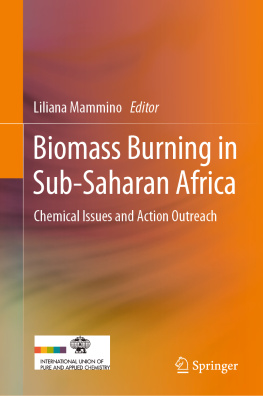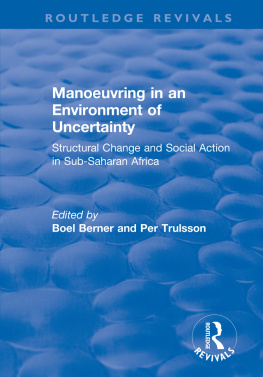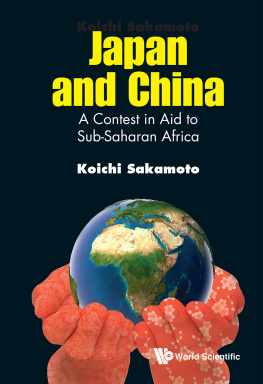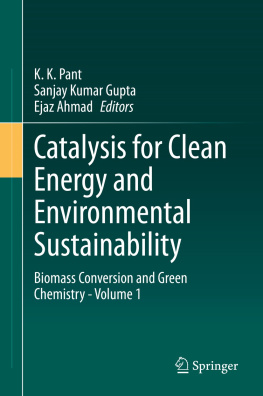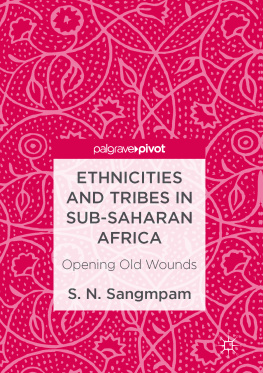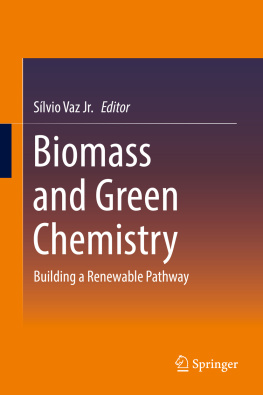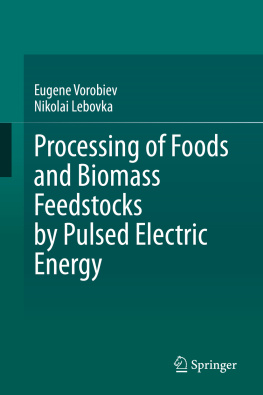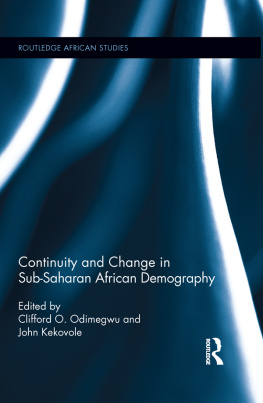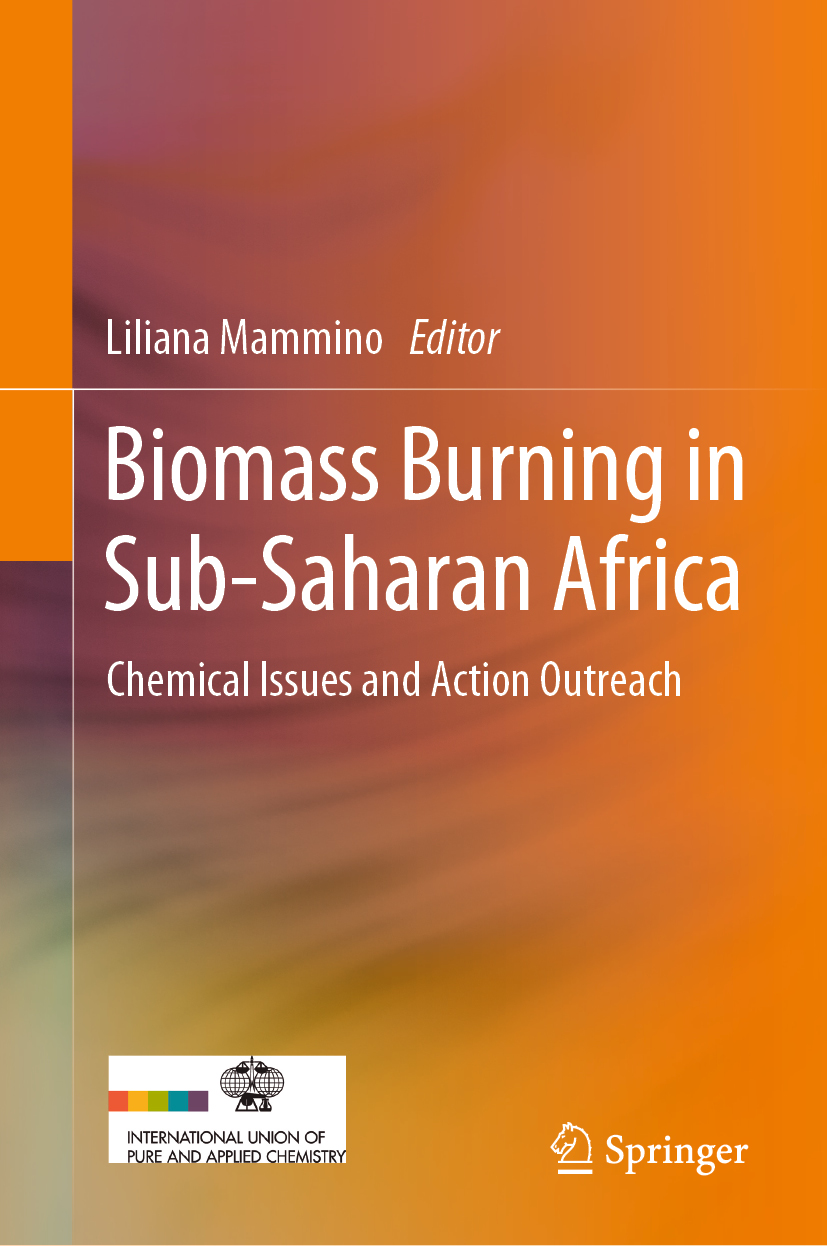Biomass Burning in Sub-Saharan Africa
Chemical Issues and Action Outreach
Editor
Liliana Mammino
School of Mathematical and Natural Sciences, University of Venda, Thohoyandou, South Africa
ISBN 978-94-007-0807-5 e-ISBN 978-94-007-0808-2
https://doi.org/10.1007/978-94-007-0808-2
Springer Nature B.V. 2020
This work is subject to copyright. All rights are reserved by the Publisher, whether the whole or part of the material is concerned, specifically the rights of translation, reprinting, reuse of illustrations, recitation, broadcasting, reproduction on microfilms or in any other physical way, and transmission or information storage and retrieval, electronic adaptation, computer software, or by similar or dissimilar methodology now known or hereafter developed.
The use of general descriptive names, registered names, trademarks, service marks, etc. in this publication does not imply, even in the absence of a specific statement, that such names are exempt from the relevant protective laws and regulations and therefore free for general use.
The publisher, the authors and the editors are safe to assume that the advice and information in this book are believed to be true and accurate at the date of publication. Neither the publisher nor the authors or the editors give a warranty, expressed or implied, with respect to the material contained herein or for any errors or omissions that may have been made. The publisher remains neutral with regard to jurisdictional claims in published maps and institutional affiliations.
This Springer imprint is published by the registered company Springer Nature B.V.
The registered company address is: Van Godewijckstraat 30, 3311 GX Dordrecht, The Netherlands
Preface
Burning grass and bushes (or even trees and forests) has been a practice common to many places and many pastoral or agricultural traditions. In the past decades, following the growing awareness of the balances and requirements of the environment, and of the importance of these balances for human health and well-being, the practice has been regulated or banned in a number of countries. Sub-Saharan Africa is currently the subcontinent where the practice is more extensive. Even satellite photos show the high density of simultaneous fires across the continent.
This book aims at offering a comprehensive picture of the various aspects involved, to highlight the complexity of the phenomenon and the ensuing challenges for the design of approaches aimed at reducing the resort to fires in the open air. Information prompts reflection, and reflection prompts the design of actions and interventions. Reflection on the plurality of aspects involved, and on their interplay, is functional to the design of approaches with higher probability to be effective. The book can thus be viewed as a seed book calling attention to this plurality.
Some aspects might need specific clarifications. Sub-Saharan Africa is currently the continent with the lowest emissions of carbon dioxide and other greenhouse gases. However, as industrial development and car ownership continue to grow at a fast rate, the rate of emission is bound to increase sharply. This book considers that decreasing the emissions from the burning of grass, savannah and forests is important and urgent, viewing this as a valueper se, in terms of protection of human health and the environment, and in terms of sustainability as a whole. In other words, it does not implydirectly or indirectlyany penalisation of agriculture practices to compensate for increasing polluting rates by other activities. The general aim is that of reducing emissions from grass/savannah/trees burning by replacing it with practices that can be equally or more beneficial to agriculture, surely more beneficial to peoples health, and involving also economically interesting perspectives for the utilization of materials that are totally wasted when simply burnt on the ground in the open air. Tackling with the other sources of emissions and pollution requires other approaches, according to their specific characteristics.
In order to highlight the complexity of the phenomenon, the book does not include only chemistry information. Chemistry is the science of substances. It is, therefore, also the science that can provide information about the undesirable effects of fires, both in qualitative terms (types of effects) and in quantitative ones (amounts of pollutants of a certain type produced, and the evaluation of the effects in relation to their amounts). This scientific and technical information is essential as the foundation from which the awareness of the existence of problems related to fires can develop. But fostering shifts to sustainable practices and behaviours requires more than the provision of scientifictechnical information: it needs to consider people and their perceptions, the design of alternative practices whose benefits can be shown easily, and the design of effective communication ways. This is also taken into account in the book.
The first seven chapters provide scientific and technical information. The chapter relates the experience of a context in another continent, tackling a similar problem, with the aim of highlighting the worldwide importance of reducing the use of fires.
Altogether, the chapters point out the importance of an interdisciplinary outlook to tackle the problem efficiently. Chemistry provides the core of scientific and technical information. Experts in the human sciences provide information on peoples attitudes and perceptions. Both types of expertise are needed in the design of interventions that can motivate people and communities to opt for sustainable practices.
Liliana Mammino
Thohoyandou, South Africa
Acknowledgements
I wish to thank all the authors that have taken the time to contribute a chapter. We all know how academics may be overloaded, devoting to their work much more time than the expected eight hours per day. In particular, in Sub-Saharan Africa, the scarcity of experts in a number of areas determines huge overloads on those who are present. I fully appreciate the additional efforts that all the authors have puton top of their regular dutiesin order to contribute their chapters.
I wish to thank IUPAC (International Union of Pure and Applied Chemistry) and, in particular, Division III (Organic and Biomolecular Chemistry) and the then Subcommittee on Green Chemistry, for endorsing and sponsoring this project (IUPAC Project No. 2007-025-1-300).
I wish to thank all the reviewers for their advice and recommendations. I wish to thank Prof. Pietro Tundo, of the University of Venice (and Chairperson of the IUPAC Interdivisional Committee on Green Chemistry for Sustainable Development) for taking time to participate in the meeting devoted to preliminary reviewing of the submitted chapters. Finally, I wish to remember the late Prof. Geoffrey Kamau, of the University of Nairobi, for his participation in that same meeting.
Contents
Tawfiq Almsatar
Giorgio Grillo , Silvia Tabasso , Giancarlo Cravotto and Teunis van Ree
Rudzani A. Makhado and Amani T. Saidi
Silas K. Mulaudzi , Luanne Otter and Rudzani A. Makhado

